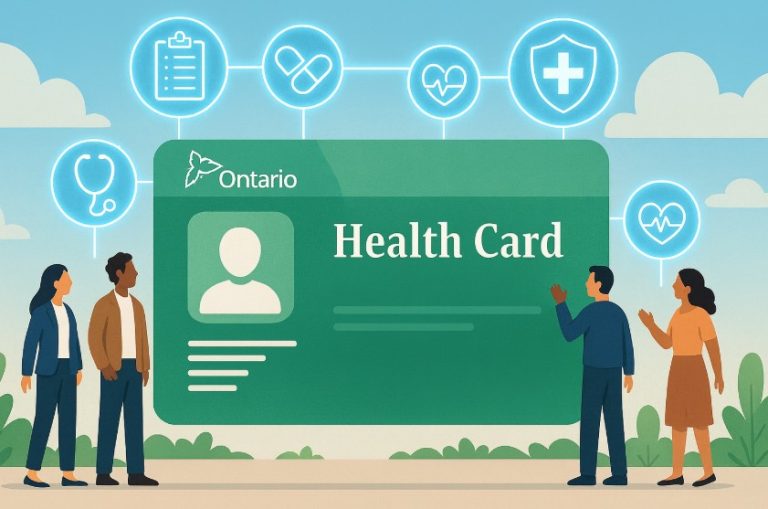What is the Canada Pharmacare Plan, and why is it important? The Canada Pharmacare Plan represents a significant step toward universal healthcare by ensuring that all Canadians have access to affordable prescription medications.
While the country’s healthcare system is highly regarded for providing universal coverage for physician and hospital services, the same cannot be said for prescription drugs.
This has left many Canadians either paying out-of-pocket for necessary medications or relying on private insurance plans with limited coverage.
The introduction of a national Pharmacare Plan aims to address these gaps and create a more equitable healthcare system across the nation.
What Is the Canada Pharmacare Plan?

The Canada Pharmacare Plan is a federal initiative designed to extend universal drug coverage to all Canadians.
Currently, prescription drugs are not included under Canada’s public healthcare system, and many canadian citizens rely on either private insurance or provincial programs, which vary widely in terms of accessibility and affordability.
The Pharmacare Plan proposes to introduce a standardized, universal drug coverage system that ensures all Canadians have access to essential medications regardless of their financial situation.
Changes introduced by the Pharmacare Plan include:
- National formulary: A list of approved medications will be available to all Canadians, ensuring uniform access across the country.
- Cost coverage: The federal government will cover the majority of drug costs, ensuring that patients won’t face significant out-of-pocket expenses for essential medications.
- Equal access: The plan will ensure that medication availability is not dependent on where someone lives or their ability to pay.
Why Is Universal Pharmacare Necessary in Canada?
Canada’s current healthcare system does not provide comprehensive prescription drug coverage, leaving many Canadians vulnerable to financial strain.
Despite having a publicly funded healthcare system, approximately 20% of Canadians either have inadequate drug coverage or none at all.
This gap forces some individuals to choose between purchasing medications or meeting other essential needs.
The introduction of a universal Pharmacare Plan is necessary for several reasons:
- Health equity: Every Canadian, regardless of income or location, should have access to necessary medications.
- Cost savings: The plan aims to reduce healthcare costs in the long term by preventing hospitalizations and serious health complications that can arise from untreated conditions.
- Social benefits: Universal coverage improves overall public health, allowing people to stay healthier and remain productive members of society.
What Are the Main Features of the Proposed Pharmacare Legislation?

The proposed Pharmacare legislation outlines several key features that make it a groundbreaking healthcare initiative for Canada:
- Universal drug coverage: The plan guarantees that all Canadians will have access to essential medications.
- Affordability: Medications included in the national formulary will be provided at little to no cost to individuals, significantly reducing out-of-pocket expenses.
- National standards: The federal government will collaborate with provinces to ensure that a consistent standard of drug coverage is provided across the country, despite regional differences.
How Will the Pharmacare Plan Be Funded?
The Pharmacare Plan’s financial model is designed to make the system sustainable and beneficial for Canadians in the long run.
The primary funding will come from federal contributions, with the government paying upfront costs and negotiating lower drug prices through bulk purchasing agreements.
This method leverages the size of the Canadian market to secure better deals with pharmaceutical companies.
In terms of long-term savings, studies have suggested that a national Pharmacare program could save Canadians billions by:
- Reducing administrative costs: A single-payer system simplifies the process of drug pricing and distribution.
- Lowering drug prices: Bulk purchasing allows the government to negotiate better prices, similar to systems in countries like the UK and New Zealand.
Here’s a quick look at how the Pharmacare Plan compares to the current system:
| Current System | Proposed Pharmacare Plan |
| Fragmented provincial coverage | Unified national drug coverage |
| High out-of-pocket expenses | Significantly reduced costs |
| Private insurance dependency | Universal, government-funded plan |
What Are the Benefits of the Pharmacare Plan for Canadians?

The benefits of the Canada Pharmacare Plan extend beyond just financial savings; it promises to improve the quality of life for millions of Canadians. Key advantages include:
- Better health outcomes: Universal access to medications will help prevent and manage chronic illnesses, reducing hospitalizations and improving overall health.
- Financial protection: Canadians will no longer face the risk of catastrophic drug costs, which can be financially devastating for families.
- Equitable healthcare: The plan ensures that all Canadians, regardless of where they live or their income level, will have equal access to medications.
These benefits are particularly significant for vulnerable populations, including low-income households, seniors, and those with chronic health conditions who currently struggle to afford their prescriptions.
How Does the Pharmacare Plan Address Regional Differences in Healthcare?
Canada’s healthcare system is managed at the provincial level, which means that drug coverage varies from one province to another.
The Pharmacare Plan will introduce a national formulary and work with provincial governments to ensure consistent medication coverage across the country.
While provinces will still play a role in administering healthcare, the federal government’s involvement will set a minimum standard for drug coverage, ensuring that no one is left behind.
Under this system:
- Provinces can maintain their existing drug coverage programs as long as they meet or exceed the national standards.
- Additional benefits may be offered regionally, but every Canadian will have access to the core list of medications on the national formulary.
What Are the Potential Challenges of Implementing Pharmacare?
Despite its potential benefits, implementing a national Pharmacare Plan comes with several challenges:
- Provincial cooperation: Gaining full provincial buy-in may be difficult, as some provinces may resist ceding control of their drug plans to the federal government.
- Cost concerns: While long-term savings are expected, the initial costs of establishing the plan could be significant, and the government will need to manage these carefully.
- Pharmaceutical industry resistance: Drug companies may push back against the bulk purchasing model, which could reduce their profit margins.
What Are the Next Steps for the Canada Pharmacare Plan?

For the Pharmacare Plan to become a reality, several key steps must be taken:
- Legislation approval: The federal government needs to pass comprehensive Pharmacare legislation, which will set the framework for universal drug coverage.
- Negotiations with provinces: Provincial governments must collaborate with federal officials to align their drug plans with the new national standards.
- Public education: Canadians need to be informed about the plan’s details and benefits so they can advocate for its successful implementation.
Moving forward, the government will focus on overcoming these challenges while ensuring that the plan can be rolled out in a timely and efficient manner.
Conclusion
The Canada Pharmacare Plan represents a transformative change in the country’s healthcare system, one that will ensure every Canadian has access to essential medications regardless of their financial circumstances.
While challenges remain in its implementation, the long-term benefits, both for public health and for the economy, make it a vital initiative.
Canadians will be able to look forward to a future where the financial burden of medication is greatly reduced, leading to healthier, more equitable lives for all.
FAQs About Canada Pharmacare Plan
What is the timeline for the implementation of the Canada Pharmacare Plan?
The exact timeline is still being determined, but initial legislation is expected to be passed soon, with full implementation following provincial negotiations.
Will the Pharmacare Plan cover all medications or only specific types?
The plan will cover medications listed on a national formulary, focusing on essential and widely used drugs.
How will Pharmacare affect private insurance plans?
Private insurance will still exist, but its role may shift to covering medications and services not included in the national plan.
What impact will the Pharmacare Plan have on prescription drug prices?
By leveraging bulk purchasing power, the plan aims to lower prescription drug prices significantly.
Who is eligible for coverage under the Pharmacare Plan?
All Canadians, regardless of age, income, or province of residence, will be eligible for coverage.
How will the Pharmacare Plan ensure equal access for all Canadians, including vulnerable populations?
The plan’s universal approach will eliminate financial barriers, ensuring that everyone, including low-income and vulnerable groups, can access medications.
What role will the provinces play in the administration of the Pharmacare Plan?
Provinces will collaborate with the federal government to align their drug programs with national standards while retaining control over other aspects of healthcare.




